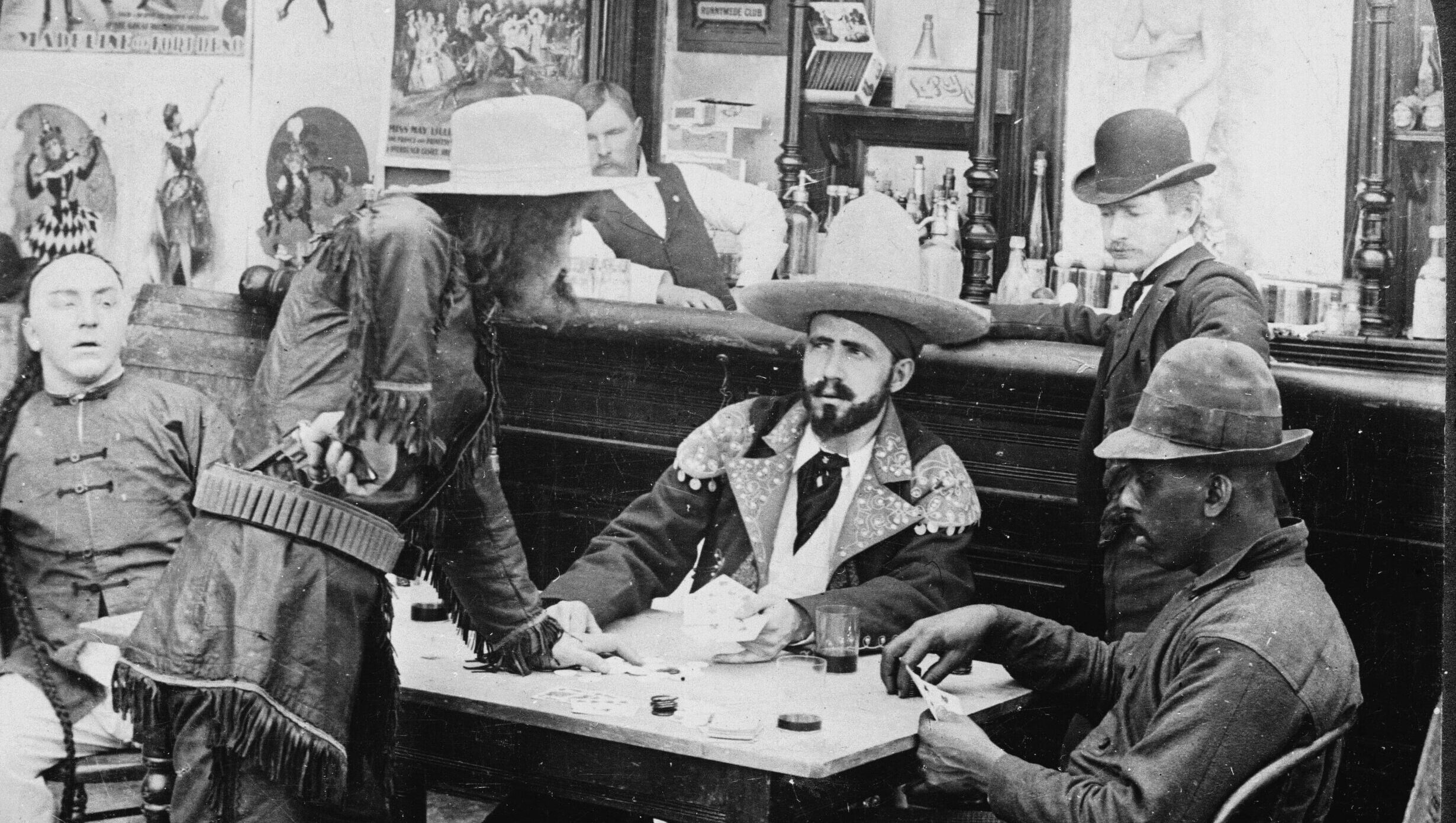Russell Kirk: American Conservative
By Bradley J. Birzer
(Lexington: University Press of Kentucky, 2015)
In the two decades since the death of Russell Amos Augustine Kirk, American conservatism has struggled. National polls suggest that “social liberals” outnumber “social conservatives”; only so-called economic conservatism is thriving. Discouraging electoral and judicial trends appear irreversible. Cocksure cable news and rambling talk radio offer only an echo chamber of stridency and sarcasm. Among self-proclaimed “conservatives,” public policy and politicization supplant the enduring essentials of humane life. A pall of superficiality and cynicism threatens to envelop contemporary conservatism.
A new biography of Kirk by Bradley J. Birzer, who holds the Russell Amos Kirk Chair in American Studies at Hillsdale College, demonstrates how Russell Kirk’s life and labors can offer a potential salve. Birzer, a historian by training, is a vibrant biographer and sympathetic guide to Kirk’s own historical orientation. Birzer not only chronicles Kirk’s own life but also expertly explores his context and competitors. While Kirk is not unknown to today’s conservatives, the vitality of Birzer’s narrative coupled with its insightful recovery of requisite conservative themes will keep Kirk from becoming a lifeless icon or byword.
General readers will enjoy the accessible introduction to Kirk’s life and thought. Scholars and students, including those already steeped in Kirk’s work, will profit from Birzer’s keen use of archival material (including Kirk’s correspondence) and his command of Kirk’s corpus of writing. Whereas previous monographs on Kirk by James E. Person Jr., W. Wesley McDonald, John M. Pafford, and Gerald J. Russello are primarily intellectual studies recounting Kirk the scholar, Birzer also gives us the first extended measure of Kirk the man. And it is perhaps in our measure of Kirk the man that we find our solution to the contemporary crisis of conservatism. Harking back to his baptismal namesake, St. Augustine, Kirk’s life reminds us that the ordo amoris is the point of life together. Consistent with Kirk’s claim that conservatism is sustained by a “body of sentiments,” conservatives must be as ready to defend what is lovable as we are to safeguard what is true.
In Birzer’s recounting of Kirk’s youth in Plymouth, Michigan, we find the initial ordering of Kirk’s affections. Like Kirk’s own recounting in his autobiography, The Sword of Imagination, Birzer emphasizes the influence of his maternal grandfather, Frank Pierce. Though Kirk appreciated his schooling (claiming that he graduated before Dewey raised the drawbridge), it was not in a classroom that Kirk acquired his old soul. Rather, long walks with his grandfather and the volumes in his grandfather’s library formed his imagination.
Extensive and diverse reading naturally led to writing, and Kirk did not hesitate to put his skills to the test, earning literary prizes as early as thirteen and winning Scholastic Magazine’s national essay contest as a high school senior. Though the essay meant nothing to him at the time, Kirk later recalled it with fondness and noted that he had written it in less than an hour. As a senior at Michigan State College (now Michigan State University) in 1940, his essay published in the academic journal College English was so impressive that the journal’s editors thought Kirk to be an “instructor in English” at the college (42). In these early academic publications, and in the private correspondence that Birzer deploys effectively, one sees some of Kirk’s lifelong themes developing: agrarianism, being worthy of our patrimony, the continuity of human nature, the perils of progress, and the problem of catering to the debased.
So dispirited was Kirk by his subsequent experience in the graduate program at Duke University that he resisted any return to academe and instead worked in the payroll department of a local factory. Birzer argues that it was wartime conscription that rescued Kirk from his corporate lot in 1942. He used the newfound leisure of Army life to read deeply and broadly from the Western canon, fight against laziness, embrace a stoical worldview, and develop his love of place despite unfamiliarity with the desert wastes. Kirk’s experiences at Ford Motor and in the Army were indeed formative. They made his criticisms of centralization more caustic and solidified his contempt for the mediocrity and homogeneity promoted by corporations, government, Hollywood, and the automobile.
Kirk also confirmed his despair of government solutions, writing of conscription, “Greater self-love has no government than this: that all men must wear Khaki so that some men may be taught to brush their teeth” (66). Such contempt for uniformity paralleled Kirk’s complaint against the “Common Man” that would later become his critique of the “faceless Proletariat.” This later term, reflecting the mutual admiration of Kirk and Robert Nisbet, scorned the unprincipled and rootless rabble “incapable of love but eager to hate.” Kirk called this common rabble the enemy of “everything old and good in our culture,” who swelled the ranks of fascists, Nazis, communists, and other ideological movements.
But one should not make too much of Kirk’s youth. As he matured, his intellectual affections changed. His early fondness for Albert Jay Nock and Isabel Paterson, both of whom also became correspondents of Kirk’s, faded. Likewise would he eventually discount William F. Buckley’s “belligerent nineteenth-century liberalism” as a “sorry way to defend conservative principles” (83). In such cases, one sees Kirk turning away from his youthful “individualistic” inclination. Such turning would mature in a biting critique of libertarianism later in his life. Kirk’s spiritual loves likewise matured. His early stoicism developed into Christian humanism and eventually made way for instruction and baptism into the Roman Catholic Church. Kirk, like C. S. Lewis, found his way into the Church through its peculiar relationship to Western civilization. But he was finally convinced to convert by the resurrection of the body, the personalism and imagery of St. Paul and St. John, and the authority and continuity that Rome offered (376–77).
Kirk’s loves also changed in another surprising manner. Just as it is hard to imagine him in corporate or military life, one is surprised to learn that Kirk did not get serious about his vocation as a writer until he was already in his doctoral program at St. Andrews. As Kirk later wrote, he was very much prone to “drifting” or laziness during these first thirty years of his life. So what made the difference? Birzer provocatively asserts that we may owe the impressive output of America’s greatest modern conservative to Rosy Ray, a woman Kirk called at the time his “best friend and the girl I love.” More precisely, we owe the launch of Kirk’s industrious career to his failed relationship with Miss Ray. After their breakup in the fall of 1948, Kirk resigned himself to “eternal loneliness” and threw himself into an “invigoration of conservative principles” that obliged intense research and writing (91–92). This rigorous turn enabled a dissertation on Burke that eventually became The Conservative Mind. Kirk also used his loneliness to roam the landscapes of Scotland and foster another important legacy, his fascination with the occult and ghosts.
Between 1948 and 1964, Kirk produced nine books of criticism and history, his first novel, over five hundred shorter pieces, and founded the University Bookman and Modern Age. Most notable from this period is Kirk’s landmark 1953 monograph The Conservative Mind, which elicited reviews in sixty-five journals and major newspapers. The book’s success was enough to encourage Kirk to follow through on his intention to resign from a tenure-track position at Michigan State College, which was by now well on its way to becoming what Kirk called “Behemoth University.” Modern Age likewise merited national attention for Kirk. Though the New York Times’s Harvey Breit distanced himself from Kirk’s conservatism, he commended Kirk as a “thoughtful man with scruples” (119). Time magazine soon named Kirk one of the fifteen most important intellectuals in America. He was not without his critics. Peter Gay called The Conservative Mind “threadbare” (129). Harvard’s Samuel Beer charged that Kirk was not a true conservative. Peter Viereck, representative of an earlier conservatism, praised The Conservative Mind but grew increasingly critical of Kirk.
Birzer weaves a tapestry of intellectual and literary history in describing Kirk’s subsequent career. He carefully summarizes debates over the nature of conservatism and its relationship to liberalism, and charmingly sketches Kirk’s admiration for Flannery O’Connor and his friendship with Ray Bradbury. Birzer’s analysis of Kirk’s friendship with T. S. Eliot is also valuable. While Kirk’s partnerships with Peter Stanlis and William F. Buckley, for example, are well known, readers may not know of Kirk’s respect for Leo Strauss. Although Kirk would later endure vitriolic attacks from Strauss’s students, he co-organized with Stanlis a 1964 conference at the University of Detroit that was devoted to Strauss and produced two of Strauss’s most famous and important essays. The last thirty years of Kirk’s life, between 1965 and 1994, were remarkably productive. Birzer tallies three thousand syndicated newspaper columns, fourteen books of criticism and history, two novels, and more than six hundred shorter pieces. And though Kirk never drove, he travelled to speak at more than three hundred universities during the course of his lifetime. Buckley praised Kirk’s “extraordinary professionalism” and argued that the diversity and quality of his work was without peer (11, 14).
In his detailed review of Kirk’s prodigious career, Birzer offers brief but insightful quibbles about some of Kirk’s decisions. He questions the value of Kirk’s relationship with Buckley and National Review, for example. (Eliot and Henry Regnery did the same.) Not only was Kirk never really an intimate of Buckley or a participant in the magazine’s New York City milieu, his work as a columnist damaged his relationship with some existing supporters. Frequent deadlines for periodicals may have also handicapped Kirk’s very promising exploration of Christian humanism. Birzer also describes how Kirk’s contests with Regnery over every aspect of Modern Age severely strained their relationship. Following Kirk’s resignation from editorship of the journal in 1960, he would not publish another book with Regnery’s imprints until 1978. Birzer likewise questions the prudence of Kirk’s foray into politics (what Kirk called the realm of the “quarter educated”) to support Barry Goldwater.
But such quibbles recall us to Kirk the man. Kirk’s life and work exemplified what his “Ten Conservative Principles” called “diversity of thought,” and what he called elsewhere the need to cherish “differences of opinion, bear in mind one’s own fallibility, and resist fads” (11).
He was also a man as generous to strangers as friends. He was faithful to his correspondents, for example, responding to thousands of queries no matter how humble or inconsequential. Birzer himself, for example, has elsewhere mentioned his own temptation as a libertarian undergraduate to send an arrogant polemic to Kirk. No doubt Kirk would have answered the undergraduate Birzer gently and speedily. He would devote entire days to responding to hundreds of correspondents despite pressing deadlines and his family’s dependence on publication income. And in recalling Kirk’s own ordo amoris, we must not neglect his helpmeet since 1963, Annette. Birzer recounts how her bearing and intelligence captured Russell’s attention from their first encounter. They became equal partners in an endeavor that includes not only four daughters but also a haven of hospitality for refugees, students, scholars, friends, well-wishers, and a hobo now buried next to Russell. Annette cajoled Russell into meeting that hobo, Clinton Wallace, with the admonition, “Oh, Russell, you’re so boring” (388–89). Piety Hill remains a pilgrimage for students and scholars, and a chronicle of American conservatism can be found in pictures taken over decades at Kirk’s ancestral home.
Birzer’s biography has its flaws, including his own insertion of personal editorials. For example, he fights both convention and long-deceased Whigs by renaming on at least two occasions the Glorious Revolution the “so-called Glorious Revolution.” His concluding discussion of Kirk’s treatment of boredom, however timely, seems more an appendix than a conclusion. Likewise, Birzer’s equating of “energy” in Patterson and Leonard Read with Aristotelian or Ciceronian virtue, or finding in it parallels to Kirk’s fascination with the Shroud of Turin, is a bit queer—as is his brief attempt at gender-inclusive pronouns in his introduction. These are but gripes, however. We are indebted to Birzer for a book that, like the principles of conservatism, will endure, ennoble, and encourage. ♦
Glenn Moots is professor of political science and philosophy at Northwood University and author of Politics Reformed: The Anglo-American Legacy of Covenant Theology.














